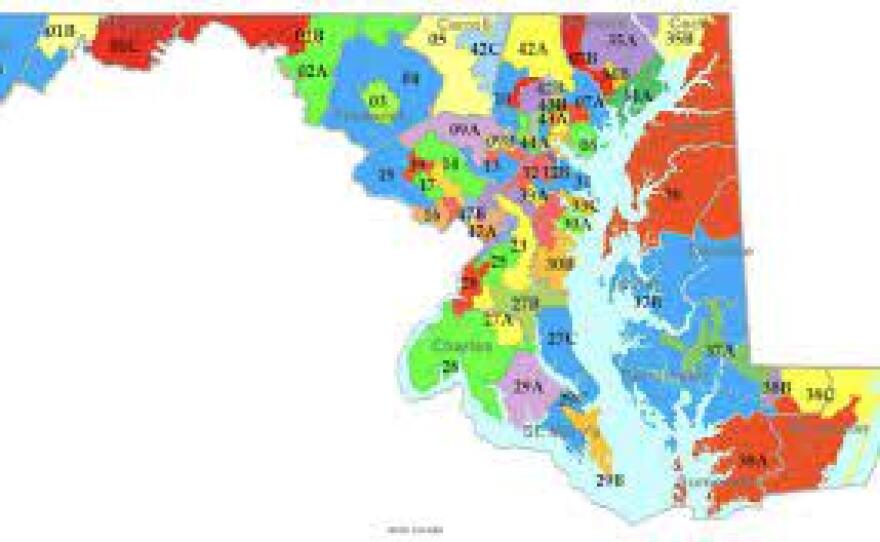Lawyers for Republicans challenging the state legislative redistricting map adopted by the General Assembly in January, closed their case Thursday, calling on a judge to declare seven districts unconstitutional and throw out the entire map.
Strider Dickson, the lawyer for Republican Delegates Kathy Szeliga, who represents parts of Baltimore and Harford counties, Nick Kipke, of Anne Arundel County, and Mark Fisher, of Calvert County, charged that many of the districts violate the state constitutional requirement to be compact.
He ticked off several districts he said were oddly shaped, including District 21, saying it “looks like a boomerang that straddles Anne Arundel and Prince George’s counties.”
“If you just look at it,” he said, “common sense says this is not something that's compact.”
Dickson told retired Judge Alan Wilner, who was appointed to hear the case by the Court of Appeals, that district and others, including District 12, which takes in parts of Baltimore and Howard counties, score poorly compared to state legislative districts nationally on several scales that measure compactness.
“Your honor, you'll see that of the 13,473 districts that have been drawn around the country over the past two decades, 13,378 have higher scores than District 12 on at least one of those metrics,” he said. “And again, if the compactness requirement means anything, District 12 is not compact.”
Assistant Attorney General Andrea Trento, defending the maps, said many of the odd shapes can be attributed to Maryland’s geography, with the Chesapeake Bay and its tributaries slicing through much of the state. And some of the districts that cross county lines can be attributed to the requirement that districts have nearly the same population.
For example, he pointed to St Mary’s County in Southern Maryland, which doesn’t have a large enough population to be its own district, noting that the boundaries of the newly drawn district are similar to those in previous redistricting maps.
“So, District 29 in St. Mary's County needs to cross a boundary somewhere to grab that population that it needs from somewhere else, somewhere outside of St. Mary's County,” he said. “And just as it did in 2012 and in 2002, District 29 C extends into the southern tip of the Calvert County peninsula, across the Patuxent.”
Judge Wilner said at the end of Thursday’s session that he would make a recommendation to the Court of Appeals within two weeks, after which the court would rule.
It could toss out the map and order the General Assembly to draft a new one, or substitute one crafted by a commission appointed by Gov. Larry Hogan, but it needs to move quickly. The State Board of Elections needs the boundaries to prepare ballots and find polling places and potential candidates need to know what district they’re running in.
The court already has moved the primary election date from June 28 to July 19 to allow time for the redistricting challenges to be resolved.
But Allan Lichtman, a history professor at American University who specializes in quantitative methods, argued that despite the odd shapes of some districts there was no partisan gerrymandering. With Maryland’s heavily Democratic voter registration, he said, it would stand to reason that most of the legislative districts would favor Democrats.








